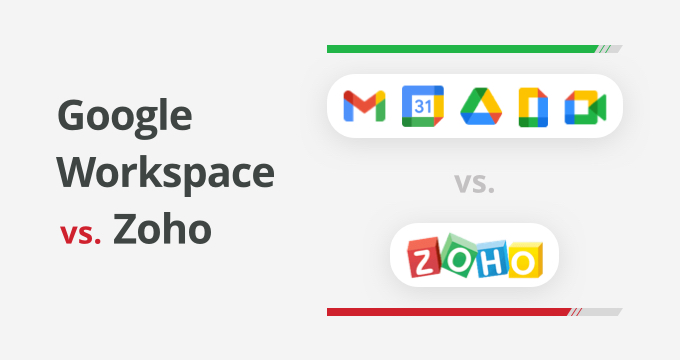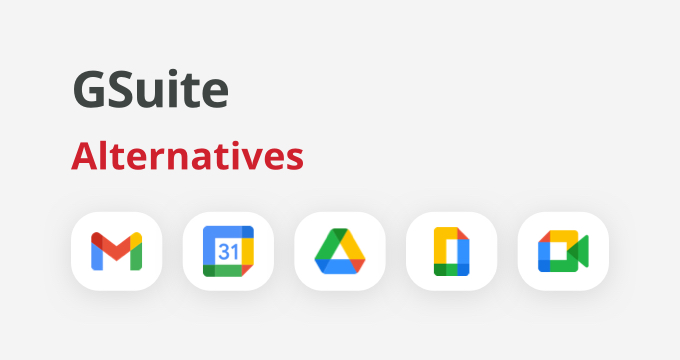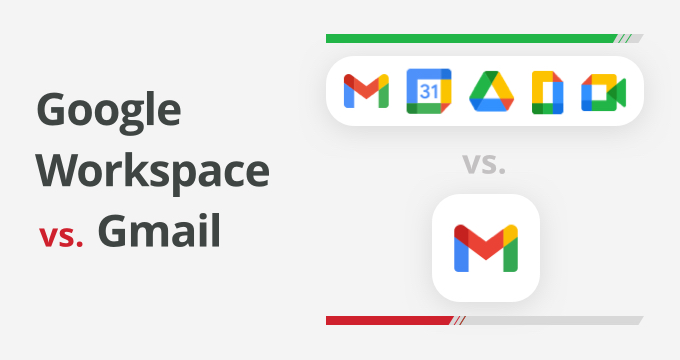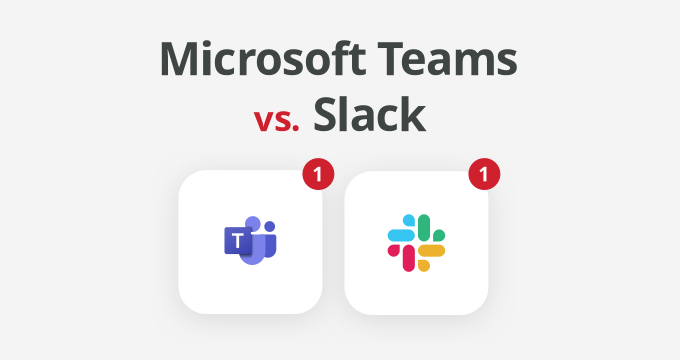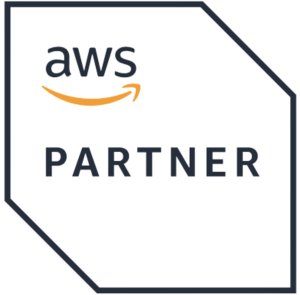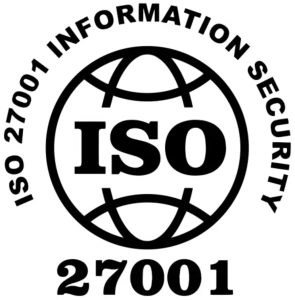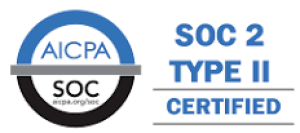Digital workspace has become an inevitable part of the modern business environment. Choosing the right platform for your unique workflow needs can be quite the task with so many alternatives available today. In this article, we’ll try to make this choice a lot easier by taking a closer look at Zoho Workplace and Google Workspace, two great collaboration and workflow productivity software solutions that offer an all-around set of features and cloud-based applications.
Now, we cannot talk about the Zoho vs G Suite (Workspace) comparison without mentioning that while Google Workspace is a far more popular platform than Zoho, the latter solution does stand up to its much bigger competitor. So, let’s examine Zoho Workplace and Google Workspace to provide you actionable insights into which of the two platforms works better for your company.
Zoho vs G Suite: Feature Comparison
Google Workspace
Google Docs – Google offers a user-friendly web-based word processor that enables teams to collaborate in real-time by sharing and editing documents, as well as communicating via a built-in chat feature and messages. An activity trail is available, so it’s easy to track who edited documents and which edits and corrections were made.
Google Sheets – This is an intuitive and highly functional cloud-based spreadsheet platform that allows users to access and edit files and tables from anywhere as long as they have an internet connection and a smart device. The tool makes project collaboration much easier and can help teams improve productivity and shorten project timeframes.
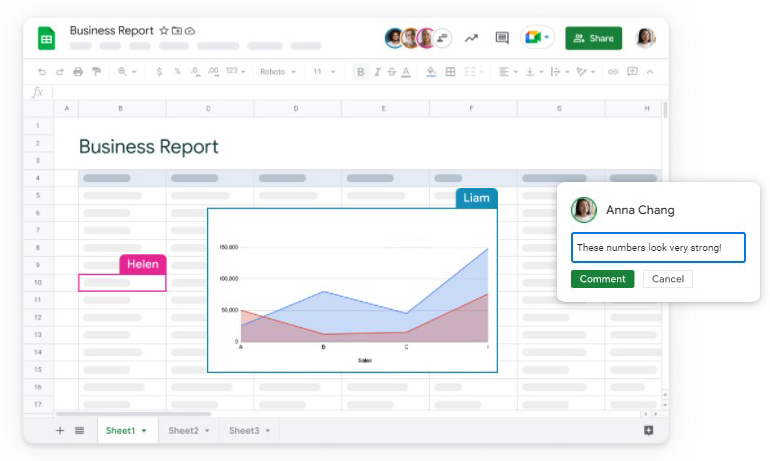
Source: Google Sheets
Gmail – One of Google’s most widely-used services, this A-grade private and business email hosting service will satisfy the needs of almost every type of organization, regardless of its size and industry.
| Related: Google Workspace (G Suite) vs. Gmail: A Full Comparison |
Slides – If online presentations are an important component of your business model, then using Slides will help you create them quickly and easily. Collaborative in nature, Google Slides provides users with a wide array of templates, slide designs, real-time editing, chat, commenting feature, etc.
Google Drive – This Google’s document storage and synchronization solution allows you to upload, access, share and manage files from a centralized and safe location.
Meet – From startups and SMBs to enterprise-level corporations, everyone uses Google Meet. Meet is a voice/video platform for fast and secured conferencing. It integrates with Chat and Calendar.
Calendar – This is a shared calendaring feature that is an important part of Google’s sub-ecosystem comprising Gmail, Drive, Contacts, Sites and Meet.
Forms – The feature helps companies to perform administration surveys by creating custom forms and questionnaires. Once completed, the survey results are calculated and easy to analyze. Automatic percentages and pie charts are also available.
Keep – Sharing notes, lists, photos, audio and drawings all in real-time is a useful operational component, which is why Google made sure that this type of tool is available to its users for easier team collaboration.
Chat – Since instant messaging is a critical tool for achieving optimal business workflows, Google offers a platform that helps teams have group or direct conversations, as well as share files and tasks via its Chat feature. It’s integrated with Docs, Sheets, Slides, Gmail, etc.
Currents – Another service that brings more internal enterprise communication options, Currents is great for facilitating group discussions, breaking down silos, improving content management operations, and connecting employees across the teams and departments.
Sites – Sites is a no-code development tool that helps businesses to easily create websites by using a substantial library of optimized pages and themes.
App Script – This low-code sub-platform enables teams to expand overall Google Workspace functionality by creating applications on top of Google’s main platform.
Cloud Search – A handy feature that allows for an advanced centralized search functionality as it enables employees to search and access files across multiple sub-platforms like Gmail, Drive, Docs, Sheets and others.
Admin – This feature makes allocating access and configuring additional security settings much easier through a single platform.
Work Insights – If your workflow requires a reporting tool based on data visualizations that would help you show desired metrics and track user adoption, then Work Insights is something you’ll be using frequently.
Endpoint – Endpoint is Google’s security feature that enables staff members to use company data in a secured manner, even while accessing it via personal devices.
Vault – This is a no-frills ediscovery and data archiving service that helps businesses tackle data retention policies. Compared to specialized third-party archiving tools, Google Vault leaves much to be desired, especially for organizations in regulated industries. You can find more information about the drawbacks of Google Vault for data archiving in this comparison.
Zoho Workplace
Writer – Zoho’s answer to Google Docs, Writer is a based word processing tool that offers similar real-time collaboration features as its competitor like document sharing, leaving comments, track changes, etc.
Sheet – Zoho users use this spreadsheet-based platform to create collaboration charts and visualize data to improve operational tasks and workflows.
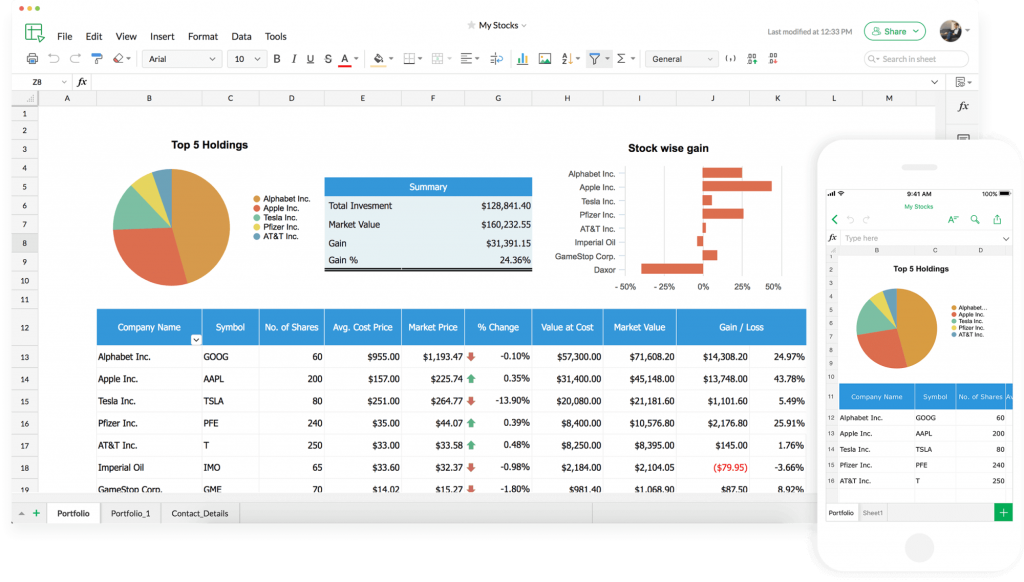
Source: Zoho Sheet
Show – This Slides doppelganger tool helps businesses generate interactive presentations that are highly customizable.
WorkDrive – WorkDrive is a user-friendly content collaboration platform that allows you to manage, store and share content across an entire organization.
ShowTime – Zoho offers an intuitive digital training and education feature that helps companies produce interactive training content, create presentations and track the progress of trainees.
Meeting – Using a web-based audio and video conferencing platform is a must, which is why Zoho offers Meetings. The tool also features screen sharing and webinar development capabilities.
Mail – The Zoho collaborative platform wouldn’t be an all-around solution without an email agent tool. Mail is their web-based email hosting answer to Gmail.
Cliq – This is a handy instant messaging service that businesses use for group chatting, audio and video calls, etc.
Connect – Zoho’s Connect is a team collaboration platform that enables companies to create their own social intranet where employees can share files, discuss problems and ideas, make announcements, etc.
Zoho vs G Suite: Cost & Storage
The table below shows Google Workspace’s pricing options:
| Cost | Storage | |
| Business Starter | $6 per user a month. | 30 GB cloud storage per user |
| Business Standard | $12 per user a month. | 2 TB cloud storage per user |
| Business Plus | $18 per user a month. | 5 TB cloud storage per user |
| Enterprise | Available upon request | Unlimited cloud storage |
The table below shows Zoho Workplace’s pricing options:
| Cost | Storage | |
| Forever Free | free | 5 GB per user (for up to 5 users) |
| Mail only | $1 per user a month (billed annually) | |
| Standard | $3 per user a month. (billed annually) | 30 GB Mail storage per user
10 GB WorkDrive storage per user |
| Professional | $6 per user a month. (billed annually) | 100 GB Mail storage per user
100 GB WorkDrive storage per user |
Zoho vs G Suite: Security & Privacy
In terms of data security, both platforms offer similar levels of protection and a set of security features, including data encryption (both at rest and in transit) for file storage, two-factor authentication, encryption (at rest) for email data, TLS encryption, and so on.
When it comes to data privacy, however, this is where certain users may have a problem with Google’s damaged reputation in this particular field.
What About Technical Support?
This is where Google Workspace shines compared to Zoho. On the one hand, Zoho Workplace does provide its users with technical support features like FAQs, user guides, webinars, and a self-service ticketing system. But on the other, it pales in comparison to Google’s 24/7 email/chat/phone support, knowledge base, customer support forums, training certifications and other tech support channels.
Great Collaboration Suites are Incomplete Without Solid Data Archiving Solutions
Some companies are likely to go with a safe-bet decision and opt for Google Workspace, while others may find Zoho’s platform to be an optimal solution for their business, but whichever suite you choose – be sure to also use a safe and user-friendly data archiving solution.
Keeping your sensitive data safe and sound is a crucial part of your data management strategy, especially if you use email platforms, social media channels, text messages and chat apps on a daily basis. Implementing data archiving also helps companies tackle compliance with industry regulations, which means that opting for a data archiving solution you can trust is critical.
Need more actionable information about archiving and ediscovery software solutions? Get a demo from Jatheon archiving experts and see our platform’s capabilities in action.
